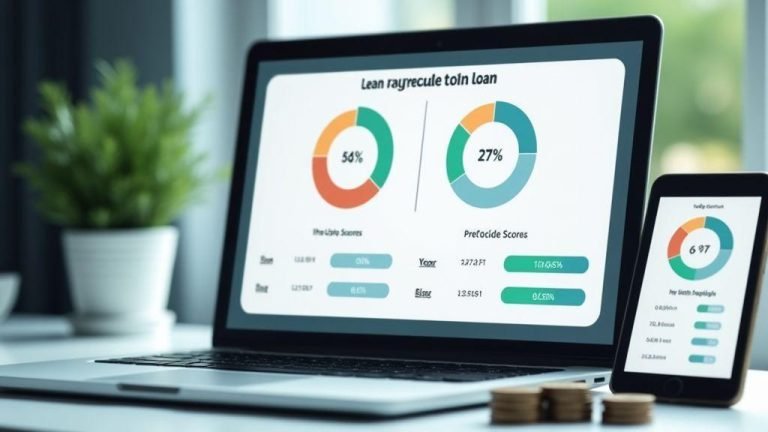Where you can find lenders for a secured personal loan with poor credit and collateral for personal loans
Start local. Visit credit unions and small community banks first — they often know you by name and may look beyond a credit score. Smaller lenders can accept a vehicle as collateral and give clearer terms. Bring a photo of the car and recent mileage. A quick chat at the branch will tell you if they’ll take the title as security or want a lien instead.
Next, look online. Many lenders advertise secured loans for people with low scores. Use comparison sites and read customer reviews. Match the lender’s max loan amount to your car’s value, and compare APR plus total fees — a lower headline rate can hide costly add‑ons. Finally, mix sources: try a credit union, an online lender, and a local bank so you can compare offers. Bring steady pay stubs, a clear title, and a recent appraisal to strengthen your file.
Credit unions, community banks, and local lenders that may accept vehicle collateral
Credit unions often give the best breaks. They’re member‑focused and may approve a secured loan based on local ties and history. A co‑signer with good credit can tip the scales in your favor.
Community banks care about reputation. They may accept vehicle titles as collateral if the car’s value covers the loan. Talk to a loan officer in person and explain your situation plainly. Showing regular income and the title makes you look less risky than a score alone suggests.
Online lenders, peer‑to‑peer platforms, and car title specialists — compare offers and title loan vs secured personal loan terms
Online lenders move fast and can provide several quotes in a day. Peer‑to‑peer platforms let individual investors fund loans and sometimes offer better rates for risky borrowers. Read the fine print for fees and prepayment rules.
Title loan specialists advertise quick cash using your car title, but APRs are often very high and repossession terms strict. Compare the total cost of a secured personal loan to a title loan — if the secured loan’s lifetime cost is lower, it’s usually the safer pick.
Documents you should bring: ID, proof of income, vehicle title and registration, recent appraisal, and insurance records
Bring a government ID, recent pay stubs or bank statements, the vehicle title and registration, a recent appraisal or market estimate, and proof of insurance. An appraisal shows fair market value and helps set a realistic loan amount. If you have explanations for past late payments or a letter from an employer, bring those too.
How using vehicle title as collateral affects rates, loan‑to‑value, and repayment choices
Using your car title as collateral lowers lender risk because they can repossess if you stop paying. That can reduce the interest rate and make approval easier with bad credit. But lower lender risk doesn’t always mean low cost for you — title lenders and some online secured loans still charge high fees or short terms. Read the fine print before signing.
Loan size ties directly to the car’s value. Lenders set loan‑to‑value (LTV) based on adjusted market value; a newer vehicle nets a bigger loan and better rates than an older one. For example, a $10,000 car at 40% LTV yields a $4,000 advance, and the rate will reflect both LTV and your credit.
Repayment options vary: some secured loans are short single‑pay deals; others require monthly payments over years. Short terms lower interest paid but increase monthly burden; longer terms reduce payments but raise total interest. Think of the title as a tool that can unlock better terms — and also lock you in if you aren’t careful. If you’re researching options, try searching the exact phrase How to use collateral to secure a personal loan with poor credit including vehicle title options for lower interest rates to find lenders and comparisons.
How loan‑to‑value for vehicle title loans is calculated and how it changes your interest rate
Lenders start with market value using guides like Kelley Blue Book, local sales, and condition, mileage, and damage. They may discount value for high miles, salvage history, or mechanical issues. LTV equals loan amount divided by adjusted value. Higher LTV means more risk and a higher APR. Reduce LTV (borrow less or improve the car’s appraised value) to nudge your rate down.
How lower interest rates with collateral compare to unsecured options and what improves loan terms with car title
Collateral usually improves approval odds and rates compared with unsecured loans when credit is poor. Credit unions and community banks typically offer much better APRs than title pawn shops. Improve terms by shopping around, providing strong documentation, lowering LTV, adding a co‑signer, or making a down payment. Present the cleanest file you can and compare offers.
Risks with vehicle title collateral: repossession, high APR, lien effects, and how to reduce them
You risk losing your car if payments stop — repossession is real and fast with title loans. Many title lenders charge very high APRs and fees that can trap you in debt. A lien can block selling or trading the vehicle. To reduce risks, pick installment loans over single‑pay title loans, check state rate caps, get terms in writing, keep current with payments, and compare credit unions and banks first. Document the car’s condition before signing and confirm the lender records the lien properly so you can clear the title when you repay.
How you can improve approval chances, choose car title loan alternatives, and avoid predatory deals
Raise your odds by showing steady income and clear documents: recent pay stubs, bank statements, photo ID, and proof of address. Freelancers should bundle several months of bank inflows with a short note explaining sources.
If you plan to use collateral, know your options and the real cost. Search for How to use collateral to secure a personal loan with poor credit including vehicle title options for lower interest rates to see choices, but don’t jump at the first title loan. Compare credit unions, savings‑secured loans, and peer‑to‑peer lenders. Some lenders hold the title only until repaid; others take it and charge high fees for missed payments.
Protect yourself from traps: read the contract aloud, watch for prepayment penalties, big origination fees, and vague repossession rules. If a lender pressures you to sign fast or asks for large upfront fees, walk away. Check state protections and file complaints with your attorney general if needed.
Steps you can take to qualify: steady income, clear documentation, co‑signer options, and ways to improve secured personal loan with poor credit outcomes
Collect at least three months of pay stubs or deposit records and a current lease or utility bill to prove residence. Reduce small credit card balances and avoid new accounts to improve your debt‑to‑income ratio.
Consider a co‑signer or a secured alternative to get better rates. Offer collateral that’s not your daily driver, like a spare car, savings, or valuables you can part with. Shorter terms and larger down payments also cut risk and interest.
Safer collateral options and car title loan alternatives: savings‑secured loans, credit union offers, peer‑to‑peer, and pawn comparisons
Savings‑secured loans are among the safest — you use your own savings as collateral and typically get a low rate while retaining access to the account. Credit unions and peer‑to‑peer platforms often give fairer deals than storefront title lenders. Pawn loans are quick but short and expensive; use them only if you plan to repay fast.
Red flags to watch for and consumer protections to use in your state
Watch for upfront cash fees, no written agreement, tiny monthly payments that hide large balloon sums, and threats of immediate repossession. If a lender refuses to show APR or total cost, that’s a red flag. Check your state’s consumer protection site for rate caps, licensing rules, and complaint steps. If you suspect fraud, contact your state attorney general or consumer finance agency. Keep every paper and take photos of the agreement and your vehicle’s condition.
Frequently asked questions
- How to use collateral to secure a personal loan with poor credit including vehicle title options for lower interest rates?
- Use your car as backup: get a clear title, shop secured personal loans and title loans, show steady income and proof of value. You can often get a lower rate than with an unsecured loan — but read terms and protect your ride.
- Which vehicle title options give you the best shot at lower interest rates?
- Newer cars with low miles, clear titles, clean maintenance records, and no existing liens give the best chance at lower rates.
- How do you prove your vehicle is good collateral?
- Provide an inspection, a valuation, title and registration, and maintenance records to boost lender confidence and get better offers.
- What risks do you face when you use your vehicle title for a loan?
- You risk repossession if you miss payments. Some title loans carry very high APRs and fees. Understand the terms and be prepared to repay or you may lose the car.
- How can you lower the interest rate even with poor credit?
- Add strong collateral, use a co‑signer, reduce LTV, pick a shorter term, shop multiple lenders, and make on‑time payments to rebuild credit.
Search tips: when researching lenders and comparisons, use the full keyword phrase How to use collateral to secure a personal loan with poor credit including vehicle title options for lower interest rates to find targeted results and lender guides.



